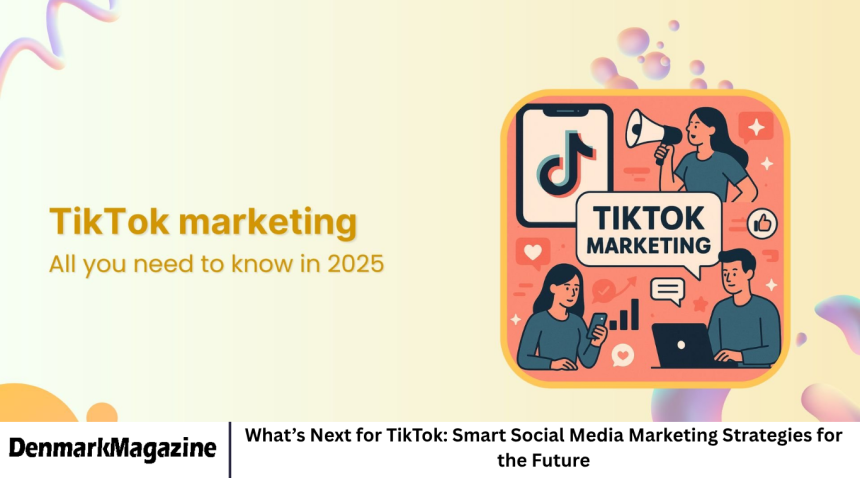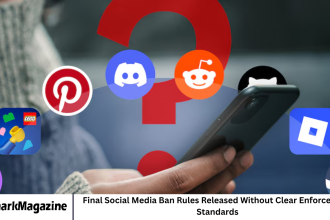TikTok has revolutionized the social media landscape in just a few short years, transforming from a fun video-sharing platform into a global marketing powerhouse. Brands, influencers, and creators have all turned to TikTok to reach younger audiences through authentic, creative, and viral content. However, as the app faces increasing scrutiny, possible regulatory changes, and evolving user trends, marketers are asking one critical question: what’s next for TikTok, and how should brands adapt their strategies for the future?
- The Evolution of TikTok as a Marketing Platform
- Current Challenges Facing TikTok
- The Future of TikTok Marketing
- Focus on Authenticity and Real Content
- Growth of TikTok Shop and Social Commerce
- AI and Personalization
- Influencer Collaboration and Micro-Communities
- Educational and Value-Driven Content
- Strategic Tips for Brands Moving Forward
- Embrace Experimentation
- Invest in Storytelling
- Use Analytics and Data Insights
- Integrate Paid and Organic Strategies
- Prepare for Platform Shifts
- The Role of Community Engagement
- Content Trends to Watch
- Balancing Risks and Rewards
- Frequently Asked Questions
- Conclusion
The future of TikTok marketing isn’t just about staying visible — it’s about staying relevant. Businesses must understand how TikTok’s environment is changing and how to leverage its powerful tools, community, and creativity to continue driving growth in a shifting digital landscape.
The Evolution of TikTok as a Marketing Platform
When TikTok first launched, it was seen as a platform for short, entertaining videos — mainly dance challenges, memes, and viral trends. Over time, it evolved into a diverse ecosystem that blends entertainment, education, and commerce.
Marketers quickly recognized TikTok’s potential for storytelling. Unlike other social media platforms that rely heavily on polished branding, TikTok thrives on authenticity and relatability. This raw, unfiltered style has become its defining strength.
Today, TikTok boasts over a billion monthly active users worldwide, making it one of the largest platforms for digital marketing. It has become a crucial space for brands to connect with younger audiences, especially Gen Z and Millennials who value creativity and social connection over traditional advertising.
Current Challenges Facing TikTok
Despite its success, TikTok faces growing challenges that could reshape how brands use it in the future. Governments in several countries have raised concerns about data privacy and national security, leading to discussions about potential restrictions or ownership changes.
In addition to regulatory uncertainty, TikTok also faces increasing competition from platforms like YouTube Shorts, Instagram Reels, and Snapchat Spotlight. These rivals have been aggressively adopting short-form video formats to capture TikTok’s audience.
Another challenge is content fatigue. With millions of videos uploaded daily, standing out on TikTok has become more difficult. Audiences have become selective, forcing creators and brands to innovate continuously to maintain engagement.
For marketers, these challenges mean the need for adaptability. A successful strategy must not only respond to potential platform changes but also evolve with user expectations.
The Future of TikTok Marketing
Even amid uncertainty, TikTok remains one of the most powerful platforms for digital marketing. Its algorithm, community engagement, and creative tools provide unmatched opportunities for brand storytelling. Here are some key directions where TikTok marketing is heading:
Focus on Authenticity and Real Content
The TikTok audience values realness over perfection. The future of content on the platform will continue to reward authenticity. Brands that showcase behind-the-scenes footage, honest testimonials, or spontaneous moments will resonate more with users than those relying solely on polished ads.
Growth of TikTok Shop and Social Commerce
TikTok is rapidly integrating e-commerce features through TikTok Shop. This allows brands to sell directly through videos and livestreams, turning entertainment into instant shopping. As social commerce grows, businesses that embrace this model early can convert engagement into direct sales.
AI and Personalization
Artificial intelligence will play an increasing role in TikTok marketing. The platform’s recommendation algorithm already uses AI to deliver highly personalized content. In the future, marketers will likely use AI-driven insights to predict trends, optimize ad performance, and deliver more relevant campaigns to specific audiences.
Influencer Collaboration and Micro-Communities
Influencer marketing will continue to be a key strategy on TikTok, but the focus is shifting from mega-influencers to niche creators. Micro-influencers with smaller but highly engaged audiences can build stronger trust with their followers. Brands will benefit from authentic partnerships that feel natural rather than overly promotional.
Educational and Value-Driven Content
As TikTok matures, more users are turning to it for information as well as entertainment. Brands that provide useful tips, tutorials, or expert advice can build authority and trust. This trend has given rise to “Edutok” — a form of educational entertainment that mixes learning with creativity.
Strategic Tips for Brands Moving Forward
To succeed on TikTok in the coming years, businesses must adopt flexible, data-driven, and audience-centered strategies.
Embrace Experimentation
TikTok thrives on creativity. Brands that experiment with different formats, sounds, and trends are more likely to go viral. Trying new ideas and taking creative risks will be essential for growth.
Invest in Storytelling
TikTok users connect emotionally with stories, not just products. Brands should focus on storytelling that evokes humor, empathy, or inspiration. Campaigns that feel personal and relatable can turn casual viewers into loyal followers.
Use Analytics and Data Insights
Understanding analytics is crucial for long-term success. TikTok’s business dashboard provides insights into engagement, reach, and audience demographics. Regularly reviewing performance data allows brands to refine their strategies and target their content effectively.
Integrate Paid and Organic Strategies
A balanced TikTok strategy combines organic content with paid advertising. Organic videos help build trust and community, while ads ensure consistent visibility and reach. Sponsored hashtag challenges, in-feed ads, and branded effects are effective tools for maximizing impact.
Prepare for Platform Shifts
As TikTok faces potential legal or ownership changes, marketers should prepare for any scenario. Diversifying social media efforts — such as building presence on YouTube Shorts or Instagram Reels — ensures stability if TikTok undergoes major transformations.
The Role of Community Engagement
TikTok’s strength lies in its communities. Every trend, sound, or challenge represents a micro-community with shared interests. Brands that engage genuinely with these groups can foster loyalty and organic advocacy.
Responding to comments, creating duets, or featuring user-generated content shows that a brand values participation over promotion. This kind of engagement transforms audiences into collaborators, not just customers.
Moreover, communities drive trends faster than algorithms do. When a brand aligns itself with the right cultural moment, it can amplify visibility and relevance instantly.
Content Trends to Watch
TikTok’s future success will be defined by emerging content trends that combine creativity with interactivity.
Shorter, Snappier Videos
While TikTok now supports longer formats, shorter videos still perform better for engagement. Attention spans remain limited, so messages must be delivered quickly and creatively.
Music Integration
Sound remains one of TikTok’s most powerful tools. Using trending tracks or collaborating with musicians can significantly boost reach. The connection between music and marketing on TikTok is expected to grow stronger in the coming years.
AR and Immersive Effects
Augmented reality (AR) filters and effects are becoming more advanced, allowing brands to create interactive experiences. These features can increase engagement and encourage users to participate in branded challenges.
Purpose-Driven Campaigns
Social responsibility and values-driven marketing are gaining traction on TikTok. Audiences respond positively to brands that take stands on issues or promote meaningful causes. Purposeful storytelling creates lasting emotional connections.
Balancing Risks and Rewards
Despite its marketing potential, TikTok’s uncertain regulatory environment means brands must navigate carefully. Companies should stay informed about policy changes, data protection regulations, and international developments that could impact platform availability.
The key is flexibility. By building adaptable strategies and diversifying digital presence, brands can continue thriving even if TikTok’s global operations evolve.
Frequently Asked Questions
What makes TikTok effective for marketing?
TikTok’s algorithm promotes content based on engagement rather than follower count, allowing brands and creators to reach wide audiences quickly through authentic videos.
How can businesses prepare for TikTok’s uncertain future?
Brands should stay informed about policy changes, diversify their presence across multiple social media platforms, and adapt their marketing strategies as needed.
What type of content works best on TikTok?
Authentic, creative, and emotionally engaging content — such as storytelling, tutorials, and trend-based videos — tends to perform best.
Is TikTok still good for small businesses?
Yes. TikTok remains one of the most cost-effective and powerful platforms for small businesses to build brand awareness and engage with younger audiences.
What is TikTok Shop?
TikTok Shop is an integrated e-commerce feature that allows brands to sell products directly through videos and live streams, turning entertainment into shopping experiences.
Conclusion
TikTok’s future will be shaped by innovation, regulation, and shifting audience behavior. For marketers, this means the need to think strategically, act creatively, and stay flexible. While no one can predict the platform’s long-term trajectory with certainty, it’s clear that TikTok has fundamentally changed the way brands engage with audiences.
The next phase of social media marketing on TikTok will emphasize authenticity, community, and creativity. Businesses that listen to their audiences, adapt to change, and embrace new technologies will continue to find success — no matter how the platform evolves.











